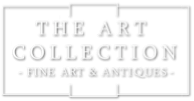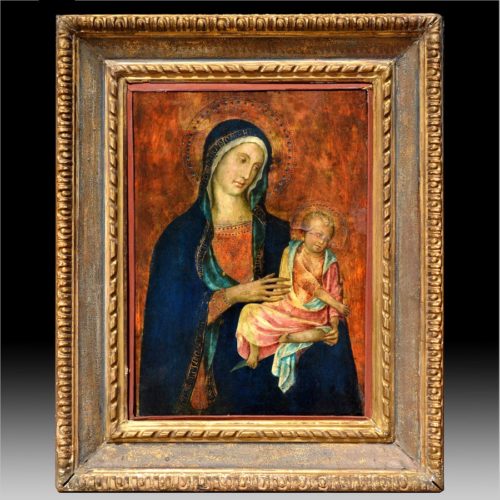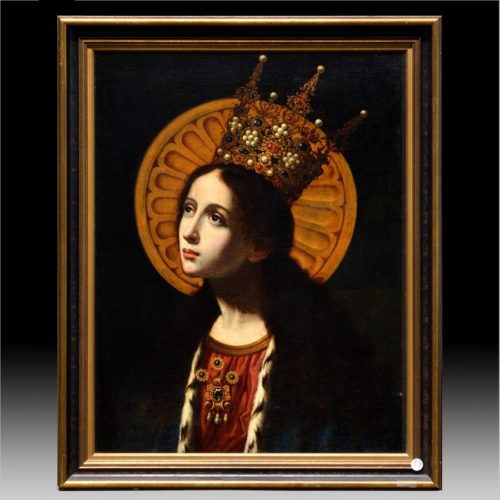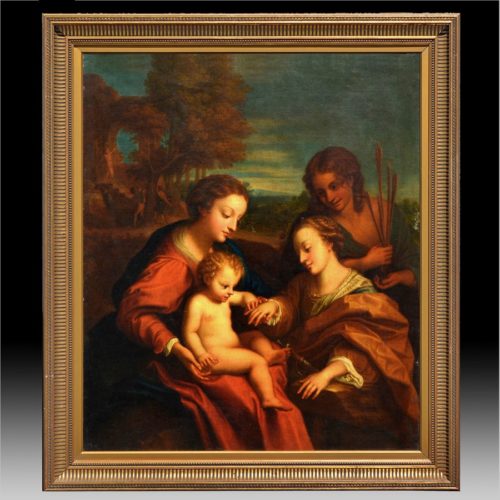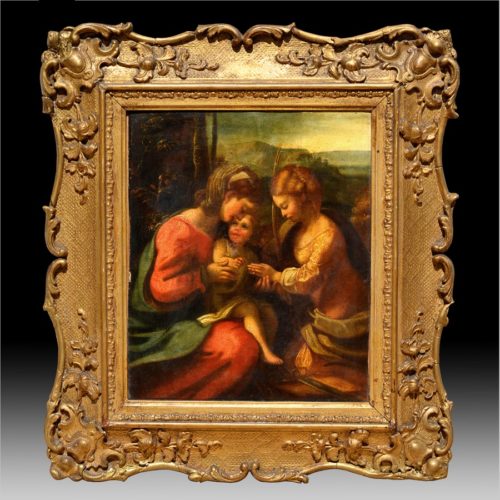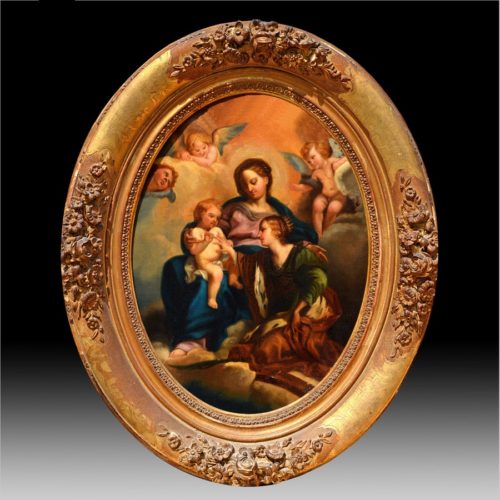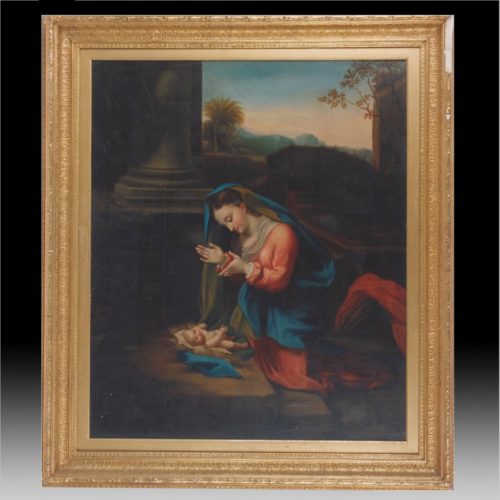-
Duccio di Buoninsegna (Italian, 1255-1318) “The Madonna and Child” Oil on panel 18 ½ x 13 inches Duccio di Buoninsegna (Italian; c. 1255–1260 – c. 1318–1319) was an Italian painter active in Siena, Tuscany in the late 13th and early 14th centuries. He is considered to be the father of Sienese painting and, along with a few others, the founder of Western art. He was hired throughout his life to complete many important works in government and religious buildings around Italy. Duccio is credited with creating the painting styles of Trecento and the Sienese school, and also contributed significantly to the Sienese Gothic style. Although much is still unconfirmed about Duccio and his life, there is more documentation of him and his life than of other Italian painters of his time. It is known that he was born and died in the city of Siena, and was also mostly active in the surrounding region of Tuscany. Other details of his early life and family are as uncertain, as much else in his history. Nevertheless, his artistic talents were enough to overshadow his lack of organization as a citizen, and he became famous in his own lifetime. In the 14th century Duccio became one of the most favored and radical painters in Siena. CL102794-10 561202-2 @NB-1040 #7
-
Francesco Curradi (Italian, 1570-1661) “The Madonna and the Angel Gabriel” Oil on canvas 26 x 20 inches (66 x 50.8 cm) CL102794-83/1 334002-2 @NB-1040 #16
-
Andrea (‘dAnqiolo) del Sarto (Italian, 1487-1531) “The Madonna of the Harpies” Oil on canvas 20 x 8 inches (50.8 x 20.3 cm) Andrea del Sarto (Italian: 1486–1530) was an Italian painter from Florence, whose career flourished during the High Renaissance and early Mannerism. Though highly regarded during his lifetime as an artist senza errori ("without errors"), his renown was eclipsed after his death by that of his contemporaries, Leonardo da Vinci, Michelangelo and Raphael. Andrea del Sarto was born Andrea d'Agnolo di Francesco di Luca di Paolo del Migliore in Florence on 16 July 1486. Since his father, Agnolo, was a tailor (Italian: sarto), he became known as "del Sarto" (meaning "tailor's son"). CL 102794-91 322101-2 @NB-1040 #18 OM-294
-
Antonio Allegri da Correggio “The Mystic Marriage of Saint Catherine” Oil on canvas 32 x 28 inches (81.3 x 71.2 cm) CL102794-78 3108802-2 @NB-1040 #68
-
Antonio Allegri da Correggio “The Mystic Marriage of Saint Catherine” Oil on canvas 10 ½” x 9” (26.7 x 22.8 cm) Antonio Allegri da Correggio (August 1489 – March 5, 1534), usually known as Correggio (Italian), was the foremost painter of the Parma school of the Italian Renaissance, who was responsible for some of the most vigorous and sensuous works of the 16th century. In his use of dynamic composition, illusionistic perspective and dramatic foreshortening, Correggio prefigured the Rococo art of the 18th century. He is considered a master of chiaroscuro. In 1503 he was apprenticed to Francesco Bianchi Ferrara in Modena, where he probably became familiar with the classicism of artists like Lorenzo Costa and Francesco Francia, evidence of which can be found in his first works. After a trip to Mantua in 1506, he returned to Correggio, where he stayed until 1510.
-
Francesco Solimena (Italian, 1657-1747) “The Mystic Marriage of Saint Catherine” Oil on canvas, Oval 12 7/8 x 9 5/8 inches (31.8 x 24.7 cm) CL102794-97 430602-2 @NB-1040 #61
-
Antonio Allegri, il Correggio “The Virgin Adoring the Christ Child” Oil on Canvas 31 ½” x 26 ½’’ 80 x 67.3 cm CL102794-79 761203-2 @AC-GN
-
Bartoloméo Estenban Murillo 1618-1682, Spanish “The Virgin with the Infant Christ Standing” Oil on canvas 62” x 42” 157.5 x 106.7 cm CL102794-63 9115603-2 @AC-NB
